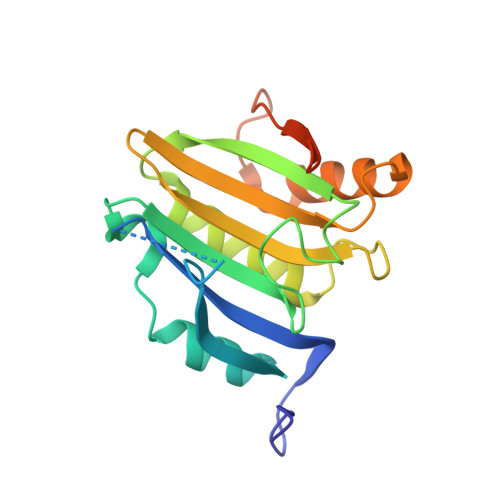A threonyl-tRNA synthetase-mediated translation initiation machinery.
Jeong, S.J., Park, S., Nguyen, L.T., Hwang, J., Lee, E.Y., Giong, H.K., Lee, J.S., Yoon, I., Lee, J.H., Kim, J.H., Kim, H.K., Kim, D., Yang, W.S., Kim, S.Y., Lee, C.Y., Yu, K., Sonenberg, N., Kim, M.H., Kim, S.(2019) Nat Commun 10: 1357-1357
- PubMed: 30902983
- DOI: https://doi.org/10.1038/s41467-019-09086-0
- Primary Citation of Related Structures:
5XLN - PubMed Abstract:
A fundamental question in biology is how vertebrates evolved and differ from invertebrates, and little is known about differences in the regulation of translation in the two systems. Herein, we identify a threonyl-tRNA synthetase (TRS)-mediated translation initiation machinery that specifically interacts with eIF4E homologous protein, and forms machinery that is structurally analogous to the eIF4F-mediated translation initiation machinery via the recruitment of other translation initiation components. Biochemical and RNA immunoprecipitation analyses coupled to sequencing suggest that this machinery emerged as a gain-of-function event in the vertebrate lineage, and it positively regulates the translation of mRNAs required for vertebrate development. Collectively, our findings demonstrate that TRS evolved to regulate vertebrate translation initiation via its dual role as a scaffold for the assembly of initiation components and as a selector of target mRNAs. This work highlights the functional significance of aminoacyl-tRNA synthetases in the emergence and control of higher order organisms.
Organizational Affiliation:
Medicinal Bioconvergence Research Center, Seoul National University, Suwon, 16229, Korea.















